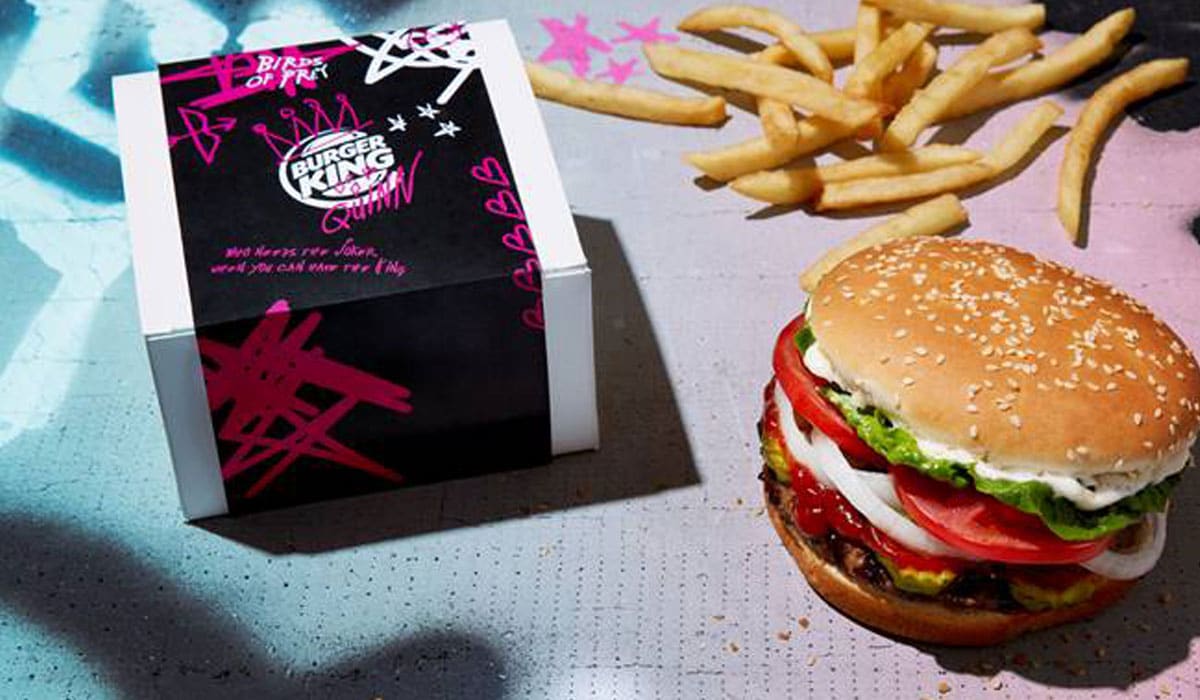Chuck Studios, a firm that’s worked with McDonald’s, KFC, and Pepsi, has a concept it calls “Culinary Identity.” It lies in presenting a product so that it represents a brand’s values, hits the right notes, and stimulates the appetite. All simultaneously. This is what separates groundbreaking fast-food advertising from formulaic campaigns.
And today, it’s arguably more convoluted than ever to break through the noise. The reason for this is pretty straightforward—restaurants find themselves trying to communicate with guests from afar. Additionally, brand loyalty spiked amid COVID-19. Customers aren’t picking restaurants for variety as much as they are familiarity, trust, and convenience. Anecdotally, you hear a lot about guests latching onto a few “favorites” and rotating them. So the key is getting into the consideration set and then locking in. That might stem from safety protocols, frictionless ordering, family meals, etc. It depends on the core user and what they’re looking for. But, regardless, it starts with inspiring that COVID-escape visit.
Olaf van Gerwen, founder and global creative director of Chuck Studios, chatted with QSR about the company’s notion of “culinary identify,” and what it means for quick-service chains globally, especially during pandemic times.
Firstly, tell us a little about Chuck Studios and the company’s background with fast-food restaurants.
Chuck Studios is the first global food-specialist creative production house. We as a company and myself as director have shot campaigns for Burger King, McDonald’s, KFC, Domino’s, Subway, Checkers & Rally’s and many more brands. With our branches in LA, Moscow, London and our HQ in Amsterdam we can supply the same quality to different regions. The quick-service restaurant space is super inspiring for us. It’s a world of taste, lots of color, beautiful ingredients and let’s not forget, great marketing. Making the food look delicious is a conditio—making it look distinctive is the next step.
How would you define “Culinary Identity?”
A Culinary Identity is a strategy that dictates your choices in food depiction. It does so by translating brand values, or the brand’s DNA, in relevant culinary equivalents. We make your product into a distinctive brand asset.
In fast food, the dish itself is usually clearly defined by operations. But we like to look at choices like how do we show the food to our consumer, what we surround the food with, in which stage does it tell your brand’s story best? How do we frame, light, dress, style, color grade, move, grab or bite it? Those should be strategic decisions rather than tactical.
What are some examples of brands today doing a good job with this?
We have created a Culinary Identity for KFC here in The Netherlands—a case we’re very proud of. In the U.K., Marks & Spencer is an awesome example. Also Lurpak, whose great campaigns we receive on a daily basis from (potential) clients as a reference, deserve a mention here. And McDonald’s. Never forget McDonald’s.
Fast-food advertising historically runs a pretty narrow line between groundbreaking and formulaic. What would be your advice for a chain looking to stand out? How do you decide between a bold or safe strategy?
There’s one thing that all the marketing professors du jour agree on: get noticed. My reflex is to say: bold, of course bold, always be bold. What strikes me is that many fast food brands do highly creative advertising in storytelling, but lag behind in actual food campaigns. It seems like creative agencies scare away from really applying their creativity to the actual product itself. Often, product films are relatively boring, back-of-house glorified assembly films. I think there is massive room for improvement there really.
[float_image image=”https://www.qsrmagazine.com/wp-content/uploads/2020/09/Maison.jpg” width=”50″ link=”” caption=”” alt=”Maison Kayser Storefront” align=”left” /]
Do some campaigns go too far? To the point where the customer forgets what they were even selling?
Burger King’s Moldy Whopper is creatively great work. Yet again, I feel it’s the type of advertising that advertising people like most. It’s an awards magnet. Downside I feel that it will not change the consumer’s opinion much. So then the question becomes, do these campaigns go too far, or do they not go nearly far enough?
What does the perfect balance look like?
A campaign that’s in the heart of culture, so it’s relevant, and don’t forget to make it delicious. Always. Then bring the deliciousness in a consistent manner and you’ll stand out and be memorable. That’s all you need to do to gain market share.
How critical is creating a unique identity today, when, for a lot of restaurants, the only time they see the customer is at the drive thru?
It’s as critical as it always was. Humans do not really change because of a pandemic. It does add gazillions of opportunities though: signs, leaflets, screens, sounds, experience, unboxing, proximity sensors, Bluetooth, AR, need I go on? The consumer is right there, near your restaurant, waiting for food. That smells not only of food, but also of opportunities.
Can this go a long way to establishing the trust factor so critical during COVID times?
Eating is an intimate act. So yes, brands have new stories to tell. Food safety always was critical, but it has become top of mind now for consumers. Again, not a problem, but an opportunity: bring the message of safety and trust in a way that underlines your brand’s DNA and it becomes an opportunity.
How do you think the pandemic has changed fast-food advertising?
In Europe, big brands have initially cancelled campaigns massively. They also cancelled premium offerings and taste variants because the logistics proved to be difficult. Campaigning is now happening mostly on core products so that leads to a different creative platform. I’m convinced we will go back to normal in the end. The inner workings of humans do not fundamentally change, even though decision taking and the process may.




